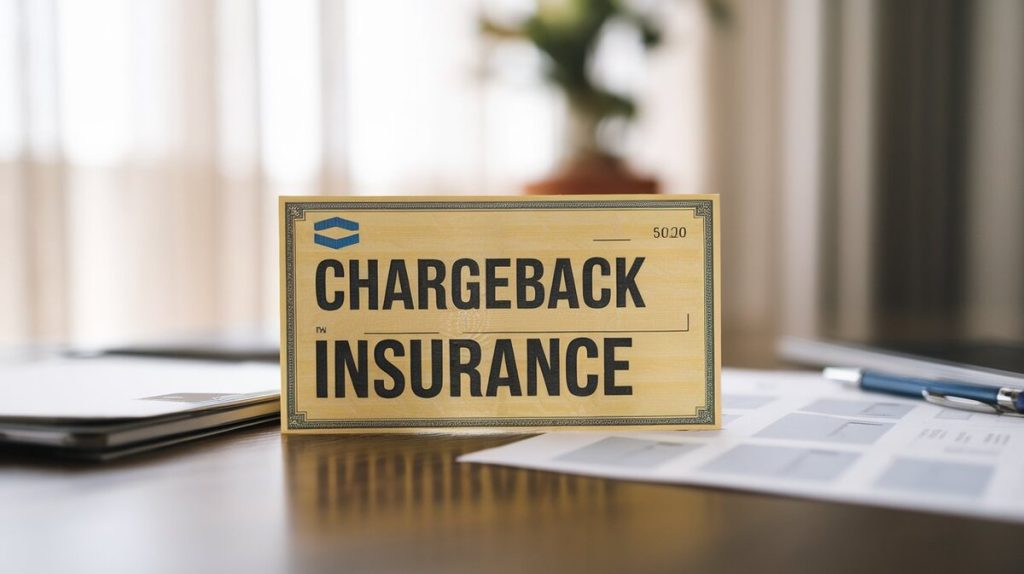Introduction
Chargebacks occur when a customer disputes a transaction, forcing merchants to return the payment. Chargebacks can drain profits, increase operational costs, and harm relationships with payment processors. For eCommerce businesses, chargebacks are particularly common. According to Visa, up to 70% of chargebacks stem from friendly fraud—customers who receive products but still claim a chargeback.
Chargeback insurance offers protection by covering certain types of chargebacks, typically those related to fraud. This article explores what chargeback insurance covers, the costs involved, and when merchants should consider purchasing it.
How Does Chargeback Insurance Work?
Chargeback insurance covers the financial loss a merchant incurs when a customer disputes a legitimate transaction. The insurance process generally involves:
- Transaction: The customer makes a purchase.
- Chargeback: The customer disputes the charge, and the bank reverses the funds.
- Claim: The merchant submits evidence to the insurance provider, proving the chargeback was unwarranted.
- Reimbursement: If the claim is valid, the insurance provider reimburses the merchant for the loss.
Insurance protects against chargebacks tied to fraud. For example, if someone uses a stolen card to buy from an online store, the business can file a claim. However, friendly fraud and other types of disputes like dissatisfaction with product quality or delivery errors are usually not covered.
What Does Chargeback Insurance Cover?
Chargeback insurance generally covers:
- Fraudulent transactions: These include purchases made with stolen credit cards.
- Phony credit card transactions: Transactions initiated with fake or cloned cards.
- Unauthorized transactions: When a customer’s card details are used without their permission.
However, many disputes are not covered, including:
- Friendly fraud: When a legitimate customer falsely claims they didn’t make a purchase.
- Merchant errors: If a product wasn’t delivered or a billing mistake was made.
| Chargeback Type | Covered? | Example |
|---|---|---|
| Fraudulent transaction | Yes | Use of stolen credit card details |
| Friendly fraud | No | Customer falsely claims they didn’t receive goods |
| Incorrect charges by merchant | No | Billing the wrong amount |
| Unauthorized purchase | Yes | Transaction without the customer’s consent |
| Failed delivery | No | Merchant fails to deliver product |

Costs of Chargeback Insurance
While chargeback insurance helps protect against losses, it comes with costs that need careful evaluation. Stripe charges about 0.4% of each transaction for chargeback insurance. Businesses in higher-risk industries, such as travel or electronics, often pay higher premiums due to the elevated risk of chargebacks.
Other expenses include:
- Risk-based premiums: Premiums increase for businesses in high-risk sectors.
- Deductibles: Some policies require merchants to cover part of the chargeback amount before insurance pays.
- Chargeback ratio penalties: Merchants with high chargeback ratios face increasing premiums, or they may lose insurance eligibility.
Partnering with Merchanto.org for Prevention
Merchants can also minimize chargebacks through proactive solutions. Merchanto.org, a partner of Visa and Mastercard, offers a suite of chargeback prevention services. Their tools, which include fraud detection and real-time monitoring, help reduce the risk of chargebacks. By using their platform, businesses can significantly reduce disputes before they escalate. Learn more about their services here.
Pros and Cons of Chargeback Insurance
Chargeback insurance offers financial security, but it’s essential to understand the limitations.
Pros:
- Protection from fraud: Covers unauthorized transactions and stolen credit card charges.
- Financial cushion: Merchants are reimbursed for chargeback losses, ensuring cash flow remains steady.
- Simplified disputes: Insurance reduces the administrative work needed to dispute chargebacks.
Cons:
- Cost: Premiums, deductibles, and increasing fees for high chargeback ratios can add up.
- Limited coverage: Most policies exclude common issues like merchant errors and friendly fraud.
- No prevention: Insurance only covers the loss but does not prevent chargebacks from occurring.
| Benefits of Chargeback Insurance | Drawbacks of Chargeback Insurance |
|---|---|
| Covers fraud-related chargebacks | Does not cover friendly fraud |
| Reduces financial impact | Premiums can be costly |
| Lowers administrative burden | Won’t prevent chargebacks from happening |
Alternatives to Chargeback Insurance
While insurance offers a safety net, businesses can consider additional or alternative solutions to manage chargebacks.
- Fraud detection systems: Tools like those offered by Stripe and Checkout.com help identify high-risk transactions, reducing the number of chargebacks.
- Chargeback management services: Services that specialize in preventing and handling disputes can save merchants money by addressing chargebacks before they escalate.
For many businesses, using a combination of insurance and prevention tools is the most effective way to manage risk.

Who Should Consider Chargeback Insurance?
Not all businesses need chargeback insurance, but some should consider it based on the nature of their transactions:
- eCommerce businesses: Online stores face a higher risk of fraud, making insurance a smart choice.
- High-risk industries: Travel, electronics, and luxury goods retailers are at higher risk of chargebacks.
- Businesses with frequent chargebacks: Companies with a history of chargebacks or high transaction volumes should consider insurance as a buffer against recurring losses.
| Business Type | Risk Level | Recommended Action |
|---|---|---|
| eCommerce | High | Combine insurance with fraud detection tools |
| High transaction volume businesses | High | Use chargeback management services in addition to insurance |
| Small local businesses | Low to moderate | Evaluate whether insurance costs outweigh potential chargeback losses |
Choosing the Right Chargeback Insurance Provider
Choosing a provider depends on several factors:
- Coverage specifics: Understand what’s covered and what’s excluded.
- Premiums and deductibles: Ensure that the costs align with your risk profile.
- Claim limits: Many providers cap the total amount they will reimburse per transaction.
Merchants should compare quotes from various providers to determine which one offers the best coverage at the most reasonable cost.
Conclusion
Chargeback insurance offers valuable financial protection for merchants, particularly in high-risk sectors or those with large transaction volumes. However, it’s essential to weigh the costs carefully and consider alternatives such as fraud detection tools and chargeback management services.
Ultimately, a balanced approach combining chargeback insurance and proactive fraud prevention tools will provide the most comprehensive protection against chargebacks.
By focusing on clear, fact-driven decisions and evaluating all available options, businesses can better protect themselves against the financial risks of chargebacks while keeping operational costs under control.



